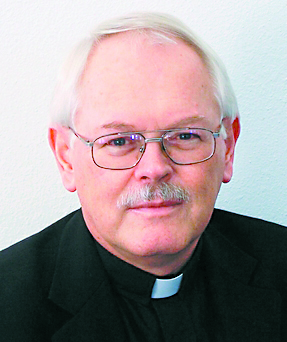IN EXILE
By Father Ron Rolheiser, OMI
A friend of mine, somewhat cynical about the church, recently remarked: “What the institutional church today is trying to do is to put its best face on the fact that it’s dying. Basically, it’s trying to manage a death.”

What he’s suggesting is that the church today, like a person struggling to accept a terminal diagnosis, is trying to reshape its imagination to eventually accommodate itself to the unthinkable, its own dying.
He’s right in suggesting that the church today is trying to reshape its imagination, but he’s wrong about what it’s trying to manage. What the church is trying to manage today is not a death, but an ascension. What needs reshaping in our imagination today is the same thing that needed reshaping in the imagination of the first disciples in the forty days between the resurrection and the ascension. We need to understand again how to let go of one body of Christ so that it can ascend and we can again experience Pentecost. What’s at stake here?
Among the elements within the paschal mystery, the ascension is the least understood. We are clearer about the meaning of the death and resurrection of Christ and the descent of the Spirit at Pentecost. We have less understanding of the ascension.
The forty days between the resurrection and the ascension were not a time of unadulterated joy for the first disciples. It was a time of some joy, but also of considerable confusion, despondency and loss of faith. In the days before the ascension, the disciples were overjoyed whenever they recognized again their risen Lord, but most of the time they were confused, despondent, and full of doubt because they were unable to recognize the new presence of Christ in what was happening around them. At one point, they gave up completely and as John put it, went back to their former way of life, fishing and the sea.
However, during that time Jesus slowly reshaped their imaginations. Eventually they grasped the fact that something had died but that something else, far richer, had been born and that now they needed to give up clinging to the way Jesus had formerly been present to them so that he could be present to them in a new way. The theology and spirituality of the ascension is essentially contained in these words: Refuse to cling to what once was, let it go so that you can now recognize the new life you are already living and receive its spirit. The synoptic gospels teach this to us in their pictorial rendering of the ascension, where a bodily Jesus blesses everyone and then rises physically out of their sight. John gives us the same theology but in a different picture. He does this in his description of the encounter on Easter morning between Jesus and Mary Magdala when Jesus says, “Mary don’t cling to me!”
Today, the church is trying to manage an ascension, not a death. I can easily see where my friend can be confused because every ascension presupposes a death and a birth, and that can be confusing. So where, really, is the church today?
Edward Schillebeeckx once suggested that we are living in that same despondency that was felt by the early disciples between Jesus’ death and their realization of his resurrection. We are feeling what they felt, doubt and confusion on the road to Emmaus. The Christ we once knew has been crucified and we cannot yet recognize the Christ who is walking with us, more alive than before, though in a new way. Hence, just as those first disciples on the road to Emmaus, we also frequently walk with faces downcast, in a confused faith, needing Christ to appear in a new guise to reshape our imaginations so that we can recognize him as he is now present to us.
I think Schillebeeckx is right about this, except that I would put it in another way. The church today is in that time between the resurrection and the ascension, feeling considerable despondency, with its imagination attuned to a former understanding of Christ, unable to recognize Christ clearly in the present moment. For many of us who grew up in a particular understanding of the faith, our former understanding of Christ has been crucified. But Christ is not dead. The church is not dead. Both Jesus and the church are very much alive, walking with us, slowly reshaping our imaginations, reinterpreting the scriptures for us, telling us again: Wasn’t it necessary that the Christ (and the church) should so suffer. …
For many of us today, to live in faith is to be in that time between the death of Christ and the ascension, vacillating between joy and despondency, trying to manage an ascension.
On the road of faith, there’s always bad news and good news. The bad news is that invariably our understanding of Christ gets crucified. The good news is that Christ is always very much alive, present to us still, and in a deeper way.
(Oblate Father Ron Rolheiser is a theologian, teacher and award-winning author. He can be contacted through his website www.ronrolheiser.com.)
